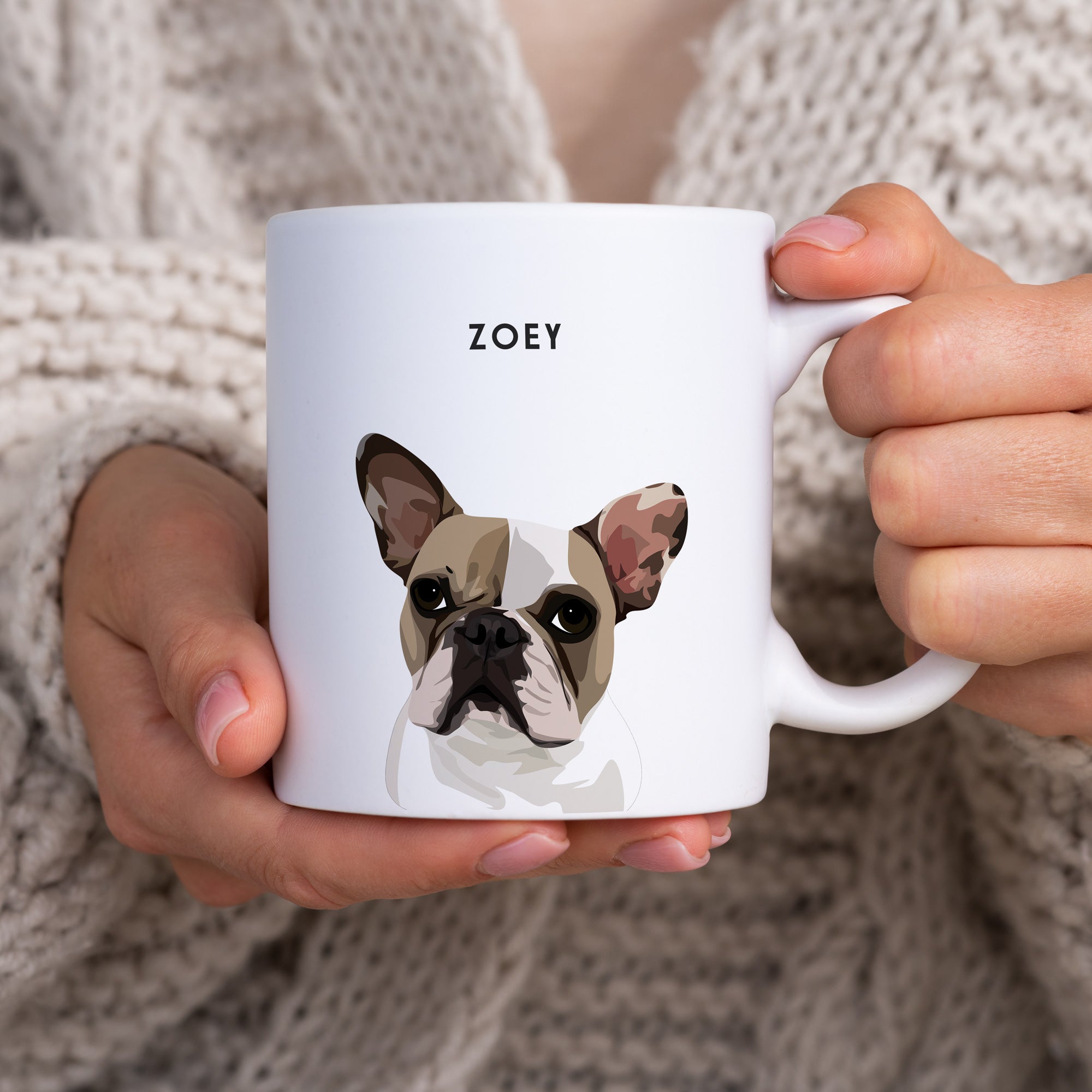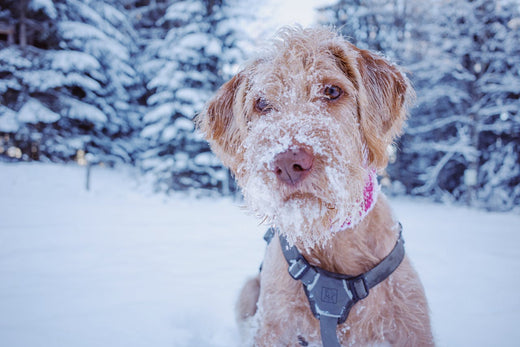Yes, dogs can shed more in winter, especially as they transition between their seasonal coats. This increase in shedding is often due to environmental factors like dry air, temperature changes, and even stress. Regular grooming, hydration, and a balanced routine can help manage shedding and keep your dog’s coat healthy.
Understanding Dog Shedding
What is Shedding?
Shedding is your dog’s way of replacing old or damaged fur with new growth, part of a natural cycle that involves three key phases. In the growth phase, hair actively grows. In the transition phase, hair growth stops but remains anchored in the follicle. In the resting phase, old hair eventually falls out to make room for fresh growth.
These phases vary by breed, age, and environment. Double-coated breeds, like Huskies or Akitas, often shed in noticeable clumps, while single-coated breeds, like Poodles, may shed so subtly that you barely notice.
Do Dogs Shed More in Winter?
Yes, dogs can shed more in winter, but dogs shedding may also vary depending on breeds and on other different factors.
Normal Seasonal Changes
Winter shedding can happen as your dog’s coat adjusts to seasonal demands. Many dogs will shed their summer coat to make way for their winter fur, creating a short-lived flurry of hair. Environmental triggers like shorter daylight hours or fluctuating indoor temperatures also play a role. Think of it as your dog’s version of swapping out flip-flops for boots.
Dehydration and Dry Skin
Winter’s dry air doesn’t just chap our lips it affects our dogs too. Dry skin can make hair brittle, leading to extra shedding. Keeping your pup hydrated is a simple yet powerful way to combat this. Make sure your dog always has access to fresh water to stay hydrated, and consider using a humidifier to moisturize the indoor air and reduce dryness.
Additionally, vet-approved moisturizers or omega-3 supplements can help nourish their skin from within, promoting a healthier coat and reducing shedding. No one wants their dog’s fur to mimic a snow globe every time they move.
Stress and Anxiety
Winter holidays can bring joy but also disruptions to your dog’s routine. Travel, new visitors, or changes in daily activities can lead to stress, which in turn can cause excessive shedding.
Watch for signs like pacing, decreased appetite, or clinginess. Regular exercise and a predictable routine can help reduce their anxiety and maybe yours too!
Medical Reasons for Dogs Winter Shedding
If your dog’s winter shedding feels excessive, it’s time to consider other factors.
-
Allergies like dust and mold often increase indoors during winter.
-
Hormonal imbalances conditions like hypothyroidism can cause abnormal shedding.
-
Nutritional deficiencies because of poor diet, lacking in essential fatty acids can harm coat health.
-
Dermatitis or infections may exacerbate hair loss.
A quick trip to the vet can rule out any serious concerns.
Why is My Dog Shedding in Winter?
Common Concerns of Dog Lovers
It’s easy to worry when your pup suddenly starts shedding more than usual. Is it normal? Is it a sign of illness? Rest assured, some shedding is expected, especially during seasonal transitions. However, excessive shedding paired with itching, bald spots, or lethargy could point to an underlying issue.
Consult a Vet When...
- Your dog develops bald patches or sores.
- Shedding spikes dramatically without a clear trigger.
- Grooming, hydration, and diet adjustments fail to improve the situation.
Your vet can assess the root cause and recommend solutions tailored to your pup’s needs.
Managing Dogs Shedding During Winter
| Breed Type | Winter Shedding | Tips to Manage Shedding |
|---|---|---|
| Labrador Retriever | Moderate to heavy shedding as coat thickens | Brush 2-3 times per week, use a deshedding tool during peak shedding times. |
| Siberian Husky | Heavy shedding while preparing winter coat | Use an undercoat rake; professional grooming helps reduce excess fur. |
| Golden Retriever | Moderate shedding in winter | Daily brushing, occasional bathing to remove loose fur. |
| German Shepherd | Heavy shedding during seasonal coat changes | Brush daily during shedding seasons; vacuum regularly to manage fur. |
| Pug | Light to moderate shedding in winter | Use a soft-bristle brush; wipe coat with a damp cloth to reduce loose hair. |
| Chihuahua | Light shedding | Brush weekly, bathe as needed to reduce shedding. |
| Cocker Spaniel | Moderate shedding | Brush regularly to prevent matting; use a slicker brush for loose fur. |
| Alaskan Malamute | Heavy shedding as coat thickens | Use a high-quality deshedding tool; professional grooming helps manage undercoat. |
| Beagle | Moderate shedding | Brush 1-2 times per week, maintain a healthy diet to reduce excessive fur loss. |
| Dachshund | Light to moderate shedding | Use a grooming glove for short coats; brush long-haired varieties weekly. |
A Fur-Free Home and A Happy Pup
Winter shedding may be a natural part of your dog’s life, but it doesn’t have to be a hassle. By understanding why it happens and taking proactive steps to manage it, you can keep your pup healthy and your home fur-free… well, as fur-free as possible.
If you notice excessive shedding or any changes in your dog’s health, don’t hesitate to consult a vet for guidance. Once you’ve got the shedding under control, why not celebrate your dog’s unique personality with a custom portrait from West & Willow? After all, every dog deserves to be cherished—framed, not just for stealing snacks!
FAQs
Do all dogs shed more in winter?
While many dogs shed more in winter, it varies by breed and environmental factors. Double-coated breeds like Huskies shed more as they prepare their winter coat, while single-coated breeds may shed subtly.
What causes my dog to shed more in winter?
Winter shedding is often due to seasonal coat changes, dry air causing brittle hair, and stress from disruptions in routine. Environmental factors like fluctuating indoor temperatures can also play a role.
How can I reduce my dog’s shedding during winter?
Regular grooming, hydration, using a humidifier, and keeping a consistent routine can help manage shedding. Omega-3 supplements and moisturizing products can also promote a healthier coat.
When should I be concerned about my dog’s winter shedding?
If shedding is accompanied by bald spots, itching, or lethargy, or if it spikes suddenly without clear cause, consult your vet. Excessive shedding could indicate underlying health issues like allergies or hormonal imbalances.
How often should I groom my dog in winter?
Grooming frequency depends on your dog’s breed. For heavy shedders like Labs or Huskies, brush 2-3 times a week. For lighter shedders like Chihuahuas, weekly brushing should be enough to keep loose hair at bay.


